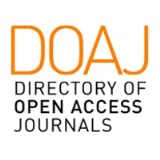Characteristics of the Marist educational proposal
DOI:
https://doi.org/10.58265/pulso.4884Abstract
The article "Exploring the Characteristics of the Marist Education Proposal" takes a historical perspective to examine the identity of Marist education, using primary texts and verified information.
It begins by examining Marcelino Champagnat's educational project, which represents a blend of congregational school heritage and innovation stemming from his own challenging experiences during his youth. Subsequently, the article highlights key traits of the First Marist Community, including a pedagogy that prioritises human relationships with children and young people, team-based teaching, and innovative projects and programmes.
Over the course of almost two centuries, many Marist educators have established distinct, fundamental, peculiar, and traditional characteristics that have become synonymous with Marist education.
Finally, the article explores how new methodological forms and procedures have created and fostered new pedagogies that cater to the changing needs of students, including educational strategies, clarity, motivation, participation, and learning application factors... The article concludes by summarising its main findings.
Downloads
References
A VIT, HB. 1993. Anales del 'Jnstitut. Citta Nuova della P.A.M.O.M. Roma.
FURET, JB. Vida de M. Champagnat. (Edición del Bicentenario) Roma 1989.
GUÍA DEL MAESTRO. 1942. Ed. Luis Vives, Zaragoza.
LANFREY, A. 1999. Champagna & Les Freres Maristes, París.
MASSON, R. 1999. M. Champagnat, las paradojas de Dios, Edelvives, Zaragoza.
MISIÓN EDUCATIVA MARISTA. 1999, Edelvives, Zaragoza.
MORAL, J.J. El Educador Marista, 2, 3. Edelvives, Zaragoza 1986 y 1987.
RUIS BLANCO, M. 2000. "Pulso", n° 23.
SESTER, P. 1985. Crónicas Maristas. Cartas. Edelvives, Zaragoza.
ZIND, P. 199 J. B. M. Champagnat, son oeuvre es colaire dans son contexte historique. Roma
Downloads
Published
How to Cite
Issue
Section
License
Copyright (c) 2022 Pulso. Revista de educación

This work is licensed under a Creative Commons Attribution-NonCommercial-NoDerivatives 3.0 Unported License.
This journal offers immediate open access to its content based on the idea that offering readers free access to research favours a global exchange of knowledge.
Papers are published in the electronic version of the journal under a Creative Commons License: Attribution-NonCommercial-No derivatives 4.0 International
Authors are allowed and encouraged to promote the post-print version (reviewed and accepted for publication version) of their work online before publishing them. This favours their earlier circulation and dissemination and thus a possible increase in their citation and reach among the academic community.













